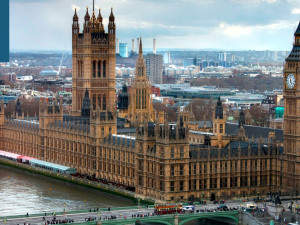
Inflation may bring economic disaster
Morning mid-market rates – The majors
11th February: Highlights
- Inflation to lead to higher wages that could create higher consumer spending
- Core inflation reaches 6% in January
- EU commission raises inflation and lowers growth predictions
BoE rate hikes could bring recession
As inflation continues to rise, a heavy foot on the brake pedal could see investment fall further as wage demands lead the country into an inflation versus pay spiral.
Continued criticism of the Central Bank’s failure to recognize the threat that rising inflation could bring last summer as it grappled with the conundrum of supporting the economy versus tackling inflation could cause an overreaction which could lead activity into negative territory.
The plaintive cry from the Bank of England Governor Andrew Bailey for workers to consider the economic consequences of demanding wage increases that match the rate of inflation would be considered laughable by the union leaders of yesteryear.
With household bills skyrocketing, to place a degree of expectation upon those who will be worst affected is both a timid and almost cowardly response to the issue.
With the industrial and manufacturing sectors now delivering little more than 20% of the country’s output, wage constraint in those areas will be of minimal consequence in any event.
Today and next week will see the markets face several data releases that will shape the Bank’s actions and the short-term fate of the currency.
Today sees the release of preliminary data for GDP in Q4 of last year, together with manufacturing and industrial output for January. Q4 GDP is likely to have fallen from 6.8% in Q3 to 6.4% in Q4. Industrial output will remain firstly muted at a little below 1% while manufacturing will have received a boost from the withdrawal of Coronavirus restrictions.
While this is now considered to be second tier data, next week will see inflation and employment reports released. The fear is that unemployment will appear to have plateaued while inflation continues to rise. Headline price increases are expected to have risen by close to 6% year on year with the core now approaching 5%.
Input producer prices, a precursor of future consumer inflation, are expected to reach close to 14%.
Fears of a third rate hike in as many meetings will be stoked should inflation data exceed the markets could see the pound begin to fall.
Yesterday, Sterling spiked to a high of 1.3643 on the back of the U.S. inflation report but fell back to close at 1.3554.
Considering your next transfer? Log in to compare live quotes today.
Is this enough for the Fed to hike by 50bp?
Headline inflation in the U.S. has now reached 7.5%, while with food and energy costs stripped out, it is now at 6%.
With the withdrawal of additional support now close to complete, the Central Bank has all but confirmed that it will hike interest rates at its next meeting that will take place on March 15/16.
There is now an outside chance that with that meeting still more than a month away that an intra-meeting hike could be considered.
Given the amount of water that will have flowed under the bridge since its last meeting, Jerome Powell and his colleagues should have a truly clear idea of what it needs to do at that meeting to begin to challenge rising prices.
Speculation is growing following yesterday’s publication of January’s inflation report that the Fed will start by hiking rates by 50bp next month.
This will provide a jolt to asset markets that could see a correction become a new downtrend.
Recent comments made by FOMC members are hopeful that inflation will begin to fall naturally early in the second quarter but having been caught out by ignoring the data and banking on inflation being transitory has led to severe criticism in some quarters.
Jerome Powell remains in temporary charge at the Fed as the Senate continues to hold up his confirmation. This appears to be little more than game-playing, as no alternative candidate has been mentioned.
Traders were a little unsure what to make of the inflation data as the dollar fluctuated between 95.17 and 96.00 finally settling back to close in the middle of its day’s range at 95.68.
Next week, a clue to the future movement of inflation will be available when producer price data is published, while a snapshot of consumer sentiment will be available as January’s retail sales data is also released.
Interest rates less than 50/50 to rise this year.
While she hasn’t provided any more to back up those comments, her demeanour has been such that they are not being taken that seriously.
Echoing the words of other Central bankers, Lagarde is hoping that inflation will begin to right itself as the pandemic begins to fade and supply chain difficulties ease. However, that is a dangerous path, with the effect of inflation on wage demands yet to be seen.
Yesterday, the EU Commission issued its review of the economy for the rest of 2022. It raised its inflation expectation for 2.2% to 3.5% and lowered its growth prediction for 4.3% to 4%.
It blamed multiple headwinds for chilling growth, while continued supply chain issues coupled with the rising price of energy drove prices higher. The commission also raised its expectation for inflation in 2023 from 1.7% to 2.2%.
This raises the possibility of the ECB being forced to act to bring down inflation, since it is now expected to remain above target for considerably longer than it had imagined it would.
Olli Rehn, the Finnish Central Bank Governor and Member of the Governing Council, spoke yesterday of the efforts being made by the ECB, which is using all the tools at its disposal to bring inflation back to its 2% target.
The Vice President of the ECB, Luis de Guindos, also spoke about the wage bargaining process. He believes that the second-round effects will become more complicated and could force the ECB into action. However, so far, wages are having little to no effect on inflation.
The euro remains tethered to the fate of the dollar. Yesterday it also gyrated between 1.1495 and 1.1374, closing at 1.1431.

About Alan Hill
Alan has been involved in the FX market for more than 25 years and brings a wealth of experience to his content. His knowledge has been gained while trading through some of the most volatile periods of recent history. His commentary relies on an understanding of past events and how they will affect future market performance.”



